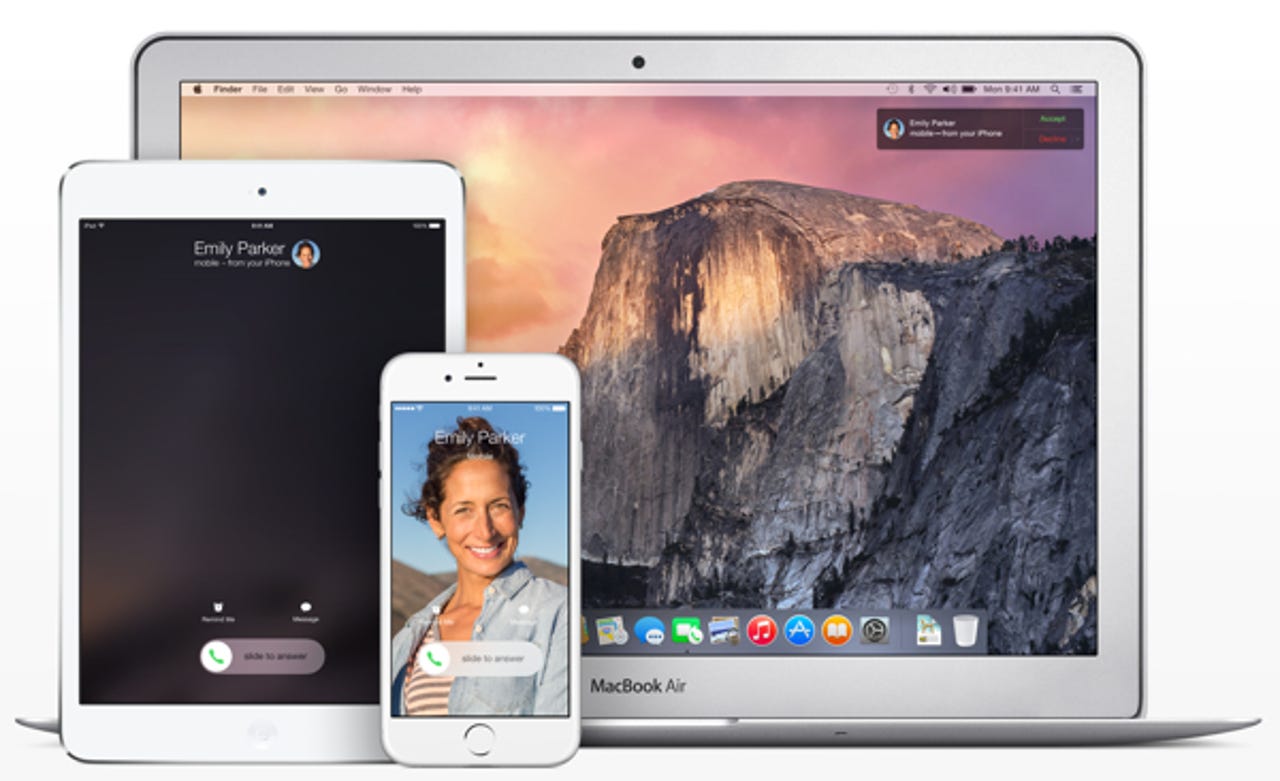iPhone 6 Plus and iPad Air: Outstanding duo for work

Apple has extended the usefulness of both the iPad Air and the iPhone with iOS 8. New features in the OS will be appreciated by consumers, and are especially useful in a business setting.

With iOS 8 and the upcoming OS X Yosemite release, Apple's engineers are moving to make using its products seamless. With the Handoff and Continuity features, users can start something on either iOS or OS X and pick up where they left off on another device.
This ability to move activities around is enabled in both Apple's and third-party apps. The philosophy driving this is to allow the user to focus on the activity, not the platform nor device used to do it.
There's a potential cost saving benefit to businesses with Handoff and Continuity. The instant hotspot feature can eliminate the expense of integrated LTE on the iPad.
The OS X participation in these activities won't be around until Yosemite ships, but they are alive and well in iOS 8. This provides nearly seamless integration between late model iPads and iPhones.
Handoff works well with the iPad Air and iPhone 6. It is particularly useful to start a quick email on the iPhone and finish it on the iPad Air when it becomes clear a more involved response better fits the situation.
Another good use for Handoff is sharing web sites in the Safari browser. With the web site open on either the iPhone or iPad, dragging the Safari icon in the lower left of the other device's lock screen opens the same web page.
These are just typical uses for Handoff, but in the business world there are many others. All of Apple's office apps (Pages, Numbers, Keynote) also support Handoff. You can be reviewing a document on one device and instantly pick up at the same spot on the other.
There's a potential cost saving benefit to businesses with Handoff and Continuity. The instant hotspot feature which is enabled with Handoff can eliminate the expense of integrated LTE on the iPad. Instant hotspot causes the iPhone to appear on the iPad's wi-fi settings, selected with a simple tap. This activates the iPhone as a hotspot for the iPad without touching the phone as it automatically turns on the Personal Hotspot on the iPhone, from the iPad.
Since workers will always have the iPhone with them, there's no need for additional cost for the iPad nor another data plan, since all the iPad needs is wi-fi. While users can use a phone as a hotspot for the tablet otherwise, having instant hotspot in iOS 8 makes it so easy that folks will use it at will.
Handoff support is open to third-party app developers and no doubt many will be getting onboard soon. This will make the integration of devices very powerful, and having used Handoff a short while on my iPhone 6 Plus and iPad Air, it has already changed the way I work. I use the iPhone far more than I've used other phones, and this is in large part due to how powerful it is as a companion to my iPad Air.
Integration aside, using the iPad and iPhone for work is a solid combination since both devices run the same OS. There are no compromises due to different features or moving from one device to the other. More importantly, having the same apps on both, with all the same features, is a big benefit to a consistent workflow.
This consistency means I am able to concentrate on the task at hand, and not app differences nor interacting with different OSes. They look the same and work the same. It's not a solution for all, but it may be a good one for some consumers and businesses.
Some of the capabilities in Handoff have been implemented by third-party apps in Android, but the strength of Apple's effort lies in the tight integration at the OS level. Not only are the features integrated to form a rounded set of tools, they are ingrained in both iOS and OS X. No third-party apps are required.
That makes it a better situation for corporate IT, as they don't have to worry about trusting third-party apps and developers to get these features going. Many of these functions work at a low level with the hardware and software and require very far-reaching permissions to function.
It's a lot easier to justify granting these permissions to apps when it's just one well-known company involved. Allowing multiple apps from unknown developers to get at the base level of the devices is not ideal.
The current tools working on the iPhone and iPad are already powerful, and they will be even more so once OS X Yosemite ships and they extend to the Mac. Workers will be able to move between devices and platforms without any impact on productivity, and that's ideal for both the enterprise and the consumer.
See related:
- iPhone 6: Cool features you should be using
- Apple iPhone 6 Plus (hands on): Already replaced my Android phone
- Android and Windows Phone have unique capabilities, but the Apple iPhone 6 Plus is still best
- What's right (and wrong) with the iPhone 6 and iPhone 6 Plus
- Business models disrupted by the iPhone 6, the Apple Watch, and Apple Pay